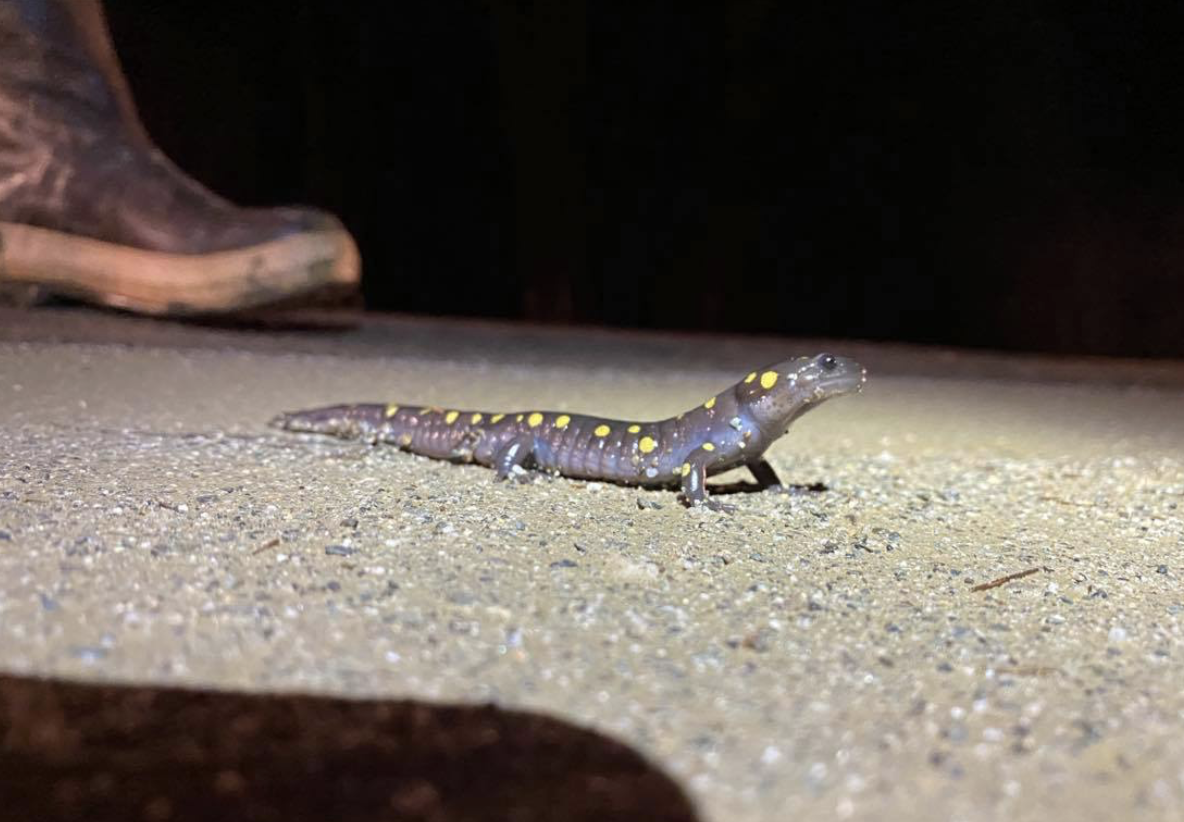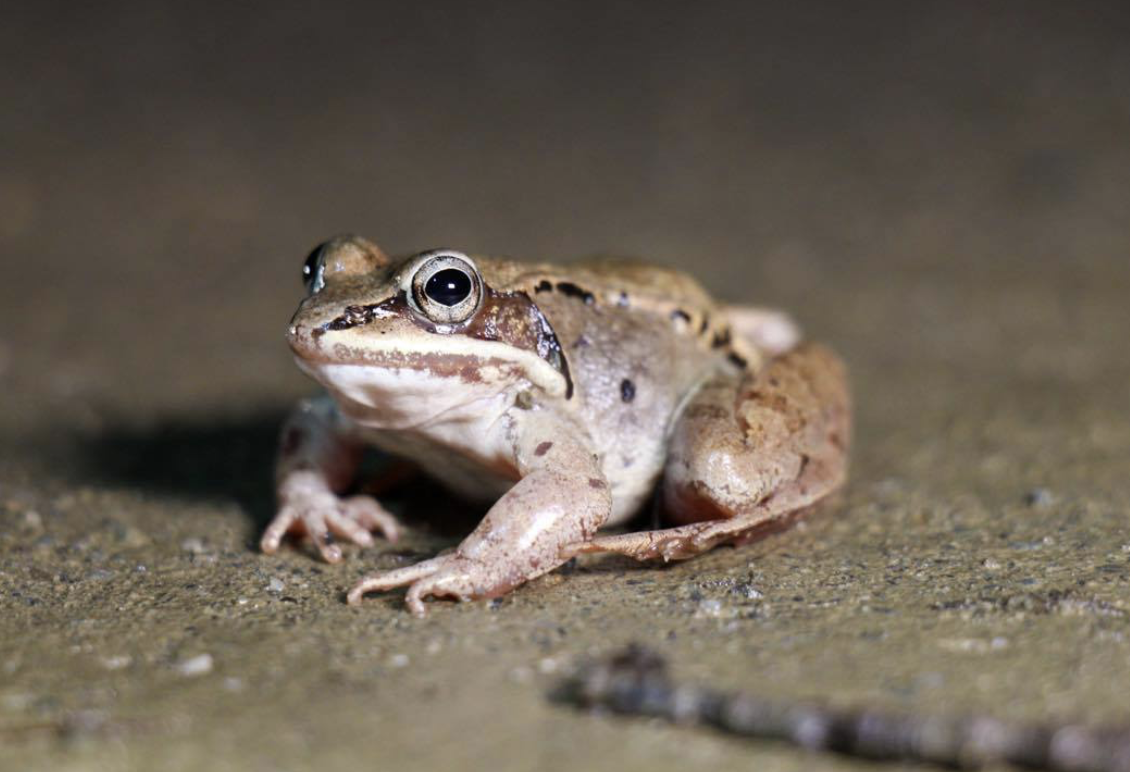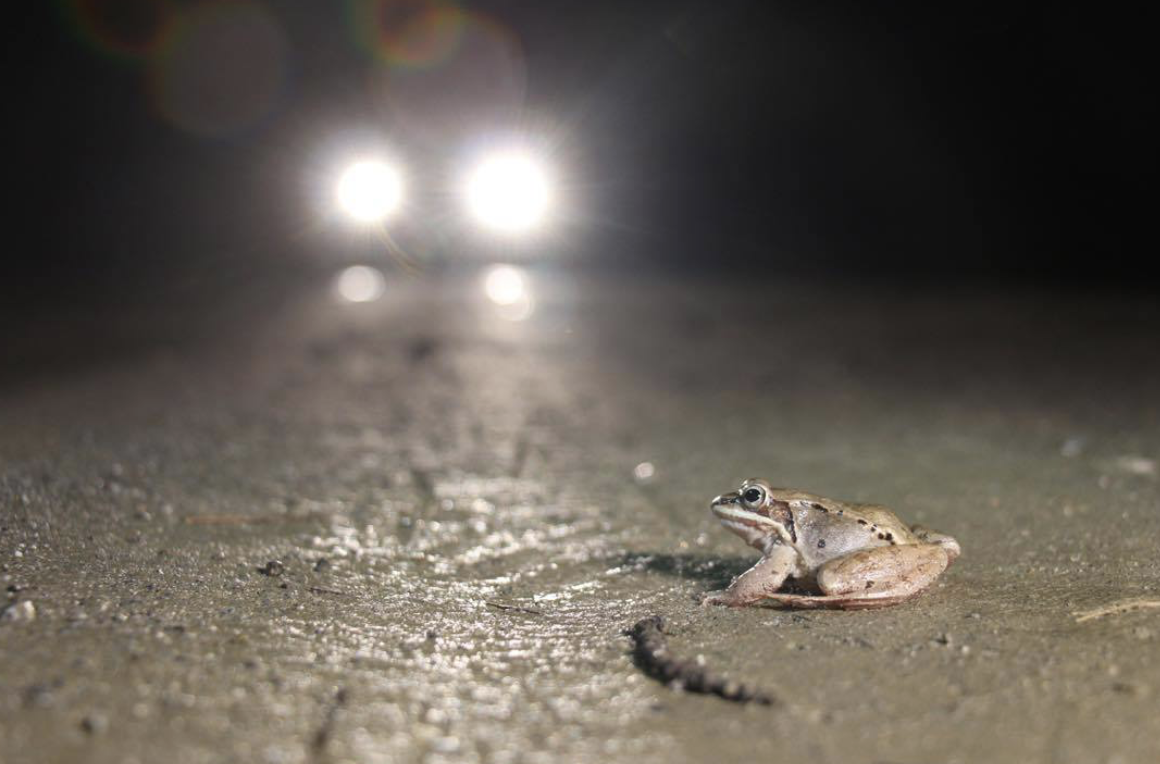Greg LeClair, Ecology and Environmental Science, University of Maine

Hi everyone! My name is Greg LeClair and I’m the project creator of The Big Night – Maine Amphibian Migration Monitoring. This is a community science project focused on protecting and collecting data on amphibians as they cross roads during their annual spring migration here in Maine, and as of May 2020, we wrapped up our third year of the project – and what a year it was!
Before we dig into the details of how the 2020 season went, we should probably cover the basics of Big Night. The project is all about protecting amphibians as they cross roads during the migration season (typically centered on April here in Maine) while collecting important data that can be used to detect vital migration routes, with the hopes that this data can help plan smarter road construction in the future. Anybody can participate in the project – families, students, military, established scientists – hence the name ‘community’ science. Interested persons only must complete a brief online training, sign a safety waiver, and then choose where they’d like to look for frogs and salamanders – there’s over 300 spots around the state to choose from, with more added every season.
2020 is already a memorable year for many reasons, and perhaps chief among them is the ongoing COVID-19 pandemic. As fate would have it, the pandemic and its associated shutdowns rolled into Maine just as the amphibian migration season was beginning. This caused a lot of concern about whether the project would be able to occur this year – however, as it turns out, big-nighting was the perfect pandemic activity!
Why would that be? While Big Night normally encourages working in groups, most participants operate alone or in groups less than 5. This not only kept the project within group size requirements mandated by the state but fell well in-line with published science that says Big Night group sizes are most effective at about two people per group. Plus, all activities are outside and fell under the classification of “essential outdoor recreational activities”, thus the project was a go!

2020 was our biggest season yet. Perhaps it was just the organic growth of the project, or perhaps the pandemic had people looking for ways to get outside. Whatever it was, we had more volunteers trained than ever, with 87 going through the full gauntlet to become “certified” salamander-savers and frog-fetchers. We also had more sites adopted than ever, with 105 sites being adopted by volunteers for survey throughout the state. These volunteers surveyed for 104 hours and 16 minutes in total between mid-March and May 1st – a huge jump from the 20 hours of s
urveying last year! This doesn’t even cover the untrained volunteers that joined the trained volunteers for surveys – by estimation, we may have had close to 200 people on the road helping amphibians this year.

Records weren’t only broken in the volunteer department – amphibian numbers were much higher as a result of the increased survey effort. This year, we collected data on 1743 amphibians, of which 1395 were alive, 333 were dead, and only 15 were injured. These are impressive numbers, but they also tell an interesting story; compared to last year’s data, this is a doubling of the number of amphibians surviving the journey compared to last year, proportionally speaking. In 2019, for every 2 amphibians found alive, one was found dead; this year, FOUR amphibians were found alive before a dead one. It’s strongly suspected that this is due to a reduction in traffic due to COVID-related shutdowns, which spells a very interesting story for how reducing traffic on just two to three nights a year could benefit our amphibian populations! For more detail on this notion, I recommend reading this New York Times article that highlighted our project and dug deeper than I have here.
This season was a blast, which was so encouraging in the face of such uncertain times. Families got outside, local police jested that they could scoot more amphibians across than our volunteers, my daughter met her first frogs and salamanders, and we got media coverage across the United States and Canada. I am so incredibly proud of where this project has gone. To see it develop a purpose and community beyond what I had initially imagined is inspiring. I hope that we continue to see Big Night serve its original intentions of protecting the amphibians it was designed for, as well as its newfound calling of connecting Mainers with nature and giving them hope during hard times. Here’s to a great future for Big Night!
